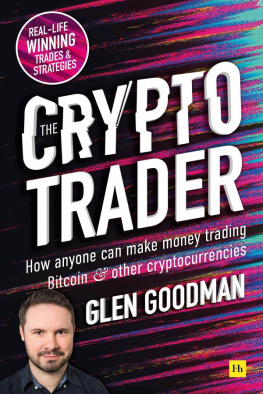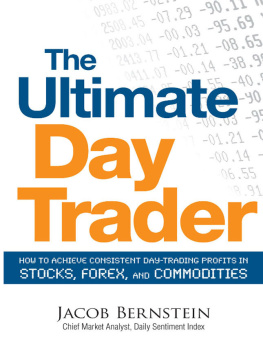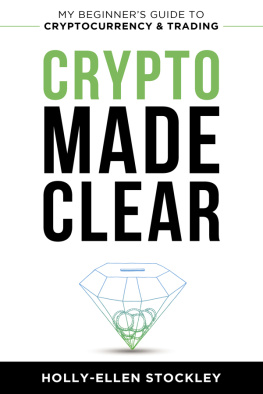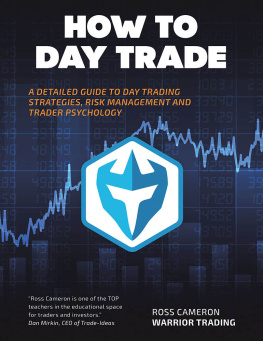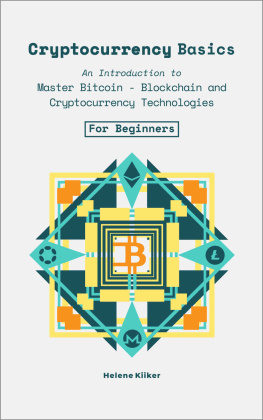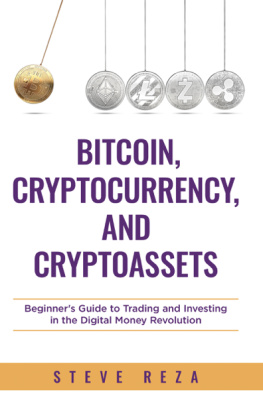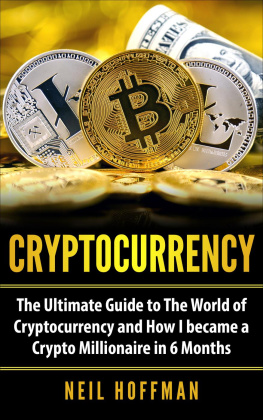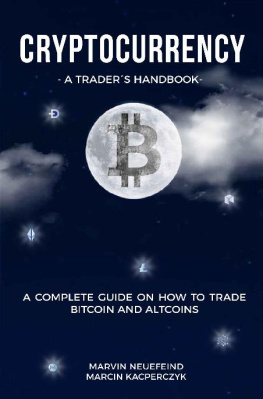Contents
Chapter 4: How to Buy and Sell Cryptocurrencies
C ryptocurrency trading is in its infancy, and trading platforms and exchanges are developing all the time, so some of the information in this chapter may become dated. But dont worry, I wouldnt leave you stranded with incomplete info, what kind of author do you think I am? On my website,
This newness is a great thing for people like you and me because as I explained in this books introduction something incredibly rare is occurring. In crypto, the little guys (with the right approach) are getting rich while the big banks and financial institutions have been left behind.
Cryptocurrencies were developed by computer geeks, a handful of these geeks got rich, and then the word spread beyond the geek community, to dorks, freaks and other assorted nerds. So they got rich too. Eventually men with trendy waxed beards and women who wear non-prescription Buddy Holly glasses got interested as well. But still no bankers. And thats because safe financial infrastructure for big investors takes a long time to develop and regulate. Bankers dealing with enormous sums of client money need to know its definitely not going to get hacked and stolen.
The apps and platforms I will show you how to use were not designed for huge institutions they were designed for regular folk, so we have the advantage. For now.
Dont forget your keys and your wallet
When you sign up with an online platform to trade cryptocurrency, you need prefer to first buy some Bitcoin with our own national currency from specialist Bitcoin sellers. We then transfer that Bitcoin into a cryptocurrency exchange and use it as our trading capital to buy other cryptos with.
When you buy Bitcoin through a website or app, you will create a virtual wallet to store it in. You will receive a wallet address and a private key to unlock that wallet. Both are simply long strings of letters and numbers that are unique to you. (Think of your wallet address as your personal bank account number.) If you intend to keep large amounts of Bitcoin in your wallet, its not advisable to leave it in the wallet set up for you by the Bitcoin-selling website. However safe they promise their storage system is, you would still have to put your trust in the company. What if the company goes bust? What if the CEO runs off to the Seychelles with all your crypto coins? Will the government compensate you? Dont be silly. This is the unregulated crypto Wild West. Youre on your own, cowboy.
Case in point: QuadrigaCX a Canadian Bitcoin exchange found itself in deep trouble in early 2019. Founder Gerald Cotton died suddenly and it seems only he had access to the passwords and recovery keys for the almost $200m of cryptocurrency in his care. At the time of writing, thousands of people are facing the prospect of never getting back the crypto holdings they entrusted to QuadrigaCX for safekeeping.
A safer option is to create your own private wallet, rather than trusting a company to look after it. Then you can decide how to keep your passwords safe and perhaps entrust a backup copy to a close family member.
Some types of Bitcoin wallet are more secure than others and usually there is a trade-off between security and convenience.
Hot wallets
Hot wallets are connected to the Internet. This means they are theoretically hackable, though the most reputable hot wallets are considered extremely difficult to hack. If you are only storing small amounts of Bitcoin, you may wish to take the risk for the sake of convenience. (Hint: I take the risk.)

The Mycelium Bitcoin Wallet app on the Google Play store
One of the oldest and most popular hot wallets is the Mycelium wallet (no, they didnt pay me to say that, but yes, I wish they had). It costs nothing, so lets take a look at how to obtain it and review its functionality.
You simply install it on your phone (iPhone or Android) as you would with any other app.
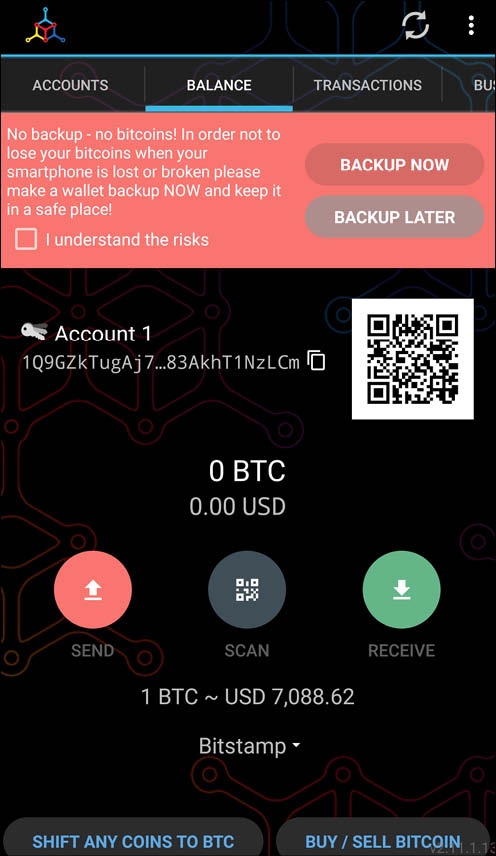
No backup no bitcoins! So back em up
The next step is to make a backup of your wallet, as subtly suggested by Myceliums bright red No backup no Bitcoins! warning. This backup will be a series of passwords you need to write down (using your physical hands and a writing implement) and keep somewhere safe.

An example Bitcoin address
The Bitcoin address is the long string of numbers and letters in the above screenshot. If anybody wants to send Bitcoins from their address to your address, all they have to do is type your address into their wallet app, or scan your QR code (the square pattern in the screenshot).
Feel free to experiment by sending as many Bitcoins as you like to my wallet
Mycelium is very convenient it sits on your phone, you can quickly send or receive Bitcoins from any other Bitcoin address in the world, so phone app wallets like this are a good solution for everyday transactions.
Once you send Bitcoins to an address, there is no way to undo that transaction. This is a key security feature of blockchains it means nobody can steal back payments theyve already made for a good or service. But of course that means if you make a mistake, your only option is to beg (or sue) the person who received your Bitcoins to transfer them back to you.
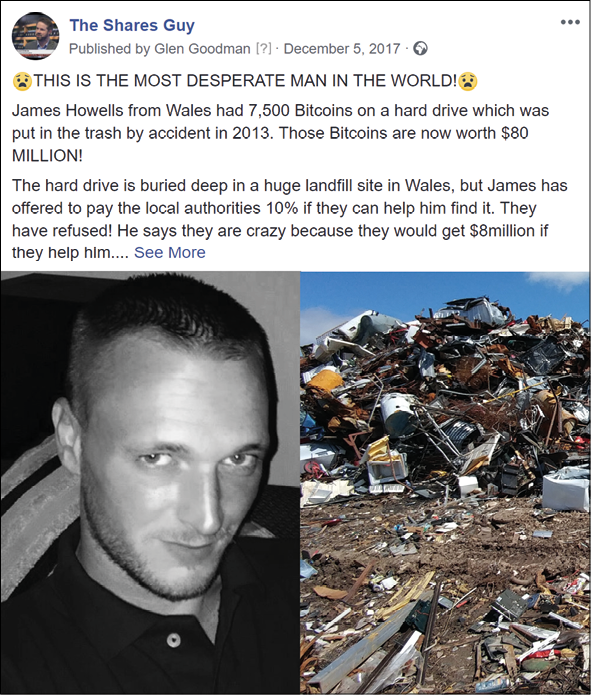
Sources: Facebook / James Howells
The flipside of having your own wallet and being in control of your own Bitcoins is that you are entirely responsible if you lose the private keys (and/or passwords) to your wallet. Theres no higher power to call upon for a second chance. Just ask James Howells, an IT worker from Newport, Wales, who accidentally threw away the laptop containing his Bitcoins, which turned out to be a 100m error! (That was approximately how much his lost Bitcoins were worth at their peak price.) When I spoke to James recently, he told me hes still hoping to persuade the local council to help him dig up his laptop. He seems generally cheerful, considering.
Cold storage
Mycelium is convenient but, because your phone is usually connected to the Internet, its not somewhere youd want to keep large amounts of Bitcoin. The safest options for long-term storage involve transferring your crypto into an offline ( cold ) wallet. If its not connected to the Internet, then nobody can hack it. You can create your own paper wallet for free if you have a printer. It will look something like this one I just knocked up at Bitcoinpaperwallet.com .

An example of a cold wallet on paper
You can see that it contains a Bitcoin address and a private key. Nobody can hack this scrap of paper though it can be burned, lost, stolen, etc. The famous Winklevoss twins
Clever but inconvenient if you dont happen to be a billionaire. Another popular method is to store your wallet on a little USB drive or pay a bit of money for a special hardware wallet. Currently the market is dominated by these two devices: the Trezor Wallet and the Ledger Nano S .
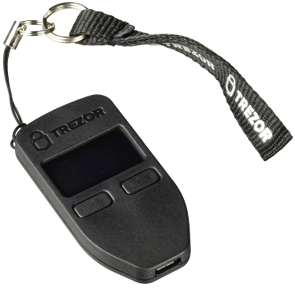
Next page
